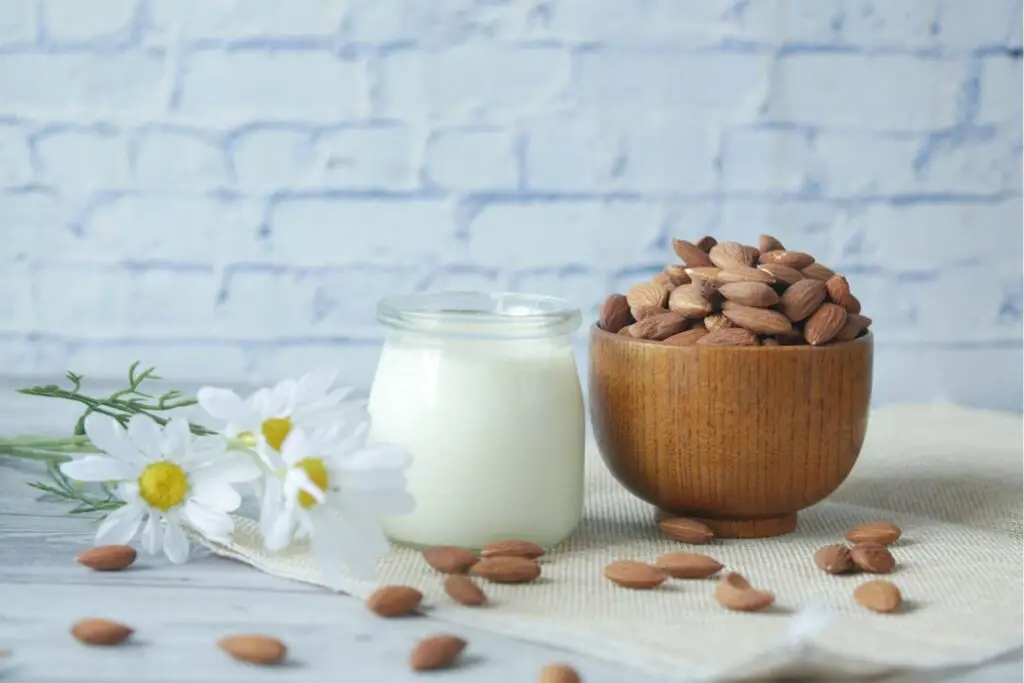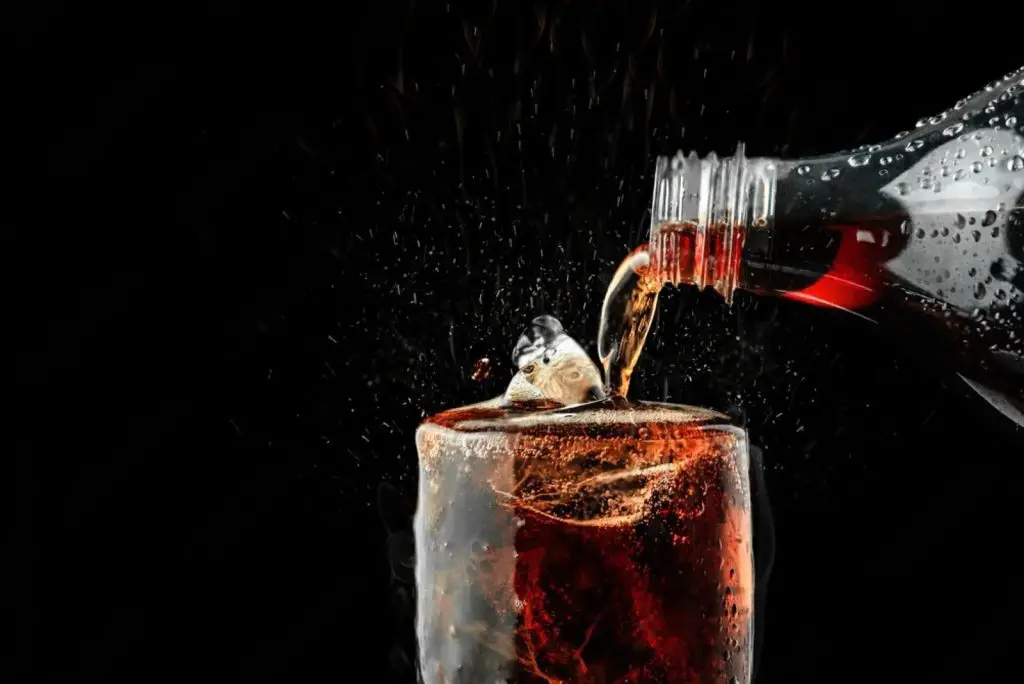
Whiskey, a beloved and time-honored spirit, stands as a symbol of craftsmanship and tradition in the world of distilled beverages. This complex and nuanced libation, crafted through the fermentation and aging of grains, carries a rich history that varies across regions and cultures. From the smoky allure of peated Scotches to the caramel notes of bourbons and the smoothness of Irish whiskeys, each style offers a unique sensory experience that captivates connoisseurs and enthusiasts alike. Whether savored neat, on the rocks, or as the base of classic cocktails, whiskey embodies a refined and flavorful journey that delights the palate and engages the senses. However, when collecting a diverse selection of whiskeys or enjoying your favorite bottle over an extended period, it might be challenging to maintain their original quality and taste.
Freezing whiskey, though not a common practice due to its low freezing point, could be explored as an option to chill the spirit without dilution, potentially enhancing its character and your sipping experience. In this guide, we will delve into the concept of freezing whiskey, offering insights into the science behind it and considering the potential effects on the beverage, allowing you to explore this unconventional approach while ensuring that each pour captures the essence of whiskey’s rich heritage and your appreciation for its intricate flavors, even when enjoying it at a cooler temperature.
Here are the simple steps to freeze whiskey:
Step 1: Choose your Whiskey
When embarking on the process of freezing whiskey, the initial step involves carefully selecting the whiskey you intend to preserve using this method. Whiskey, a distinguished spirit with a wide range of flavor profiles and characteristics, can respond differently to freezing based on its composition and properties.
Whiskey enthusiasts often opt to freeze their spirits to extend their shelf life and maintain their original qualities for a longer duration. However, it’s crucial to exercise caution and make informed choices regarding which whiskeys are suitable for freezing. The reason behind this caution lies in the intricate chemistry of whiskey.
Whiskey is a complex mixture of various compounds, including aromatic compounds, congeners, and flavor molecules, which contribute to its distinctive taste and aroma. When whiskey is subjected to freezing temperatures, these compounds can be affected in different ways. While some whiskeys tolerate freezing well and might even exhibit enhanced smoothness or mellowed flavors after thawing, others might experience subtle changes that alter their intended taste profile.
Variations in whiskey types, such as bourbon, Scotch, rye, and single malt, can influence how they react to freezing. Additionally, the aging process, barrel type, and overall composition of the whiskey can impact its freeze-thaw stability. For instance, some heavily aged and nuanced whiskeys might lose some of their complexity and character due to freezing.
As you consider freezing your whiskey, it’s advisable to research the specific brand and type you plan to freeze. Consult with experts, read reviews, and gather insights from fellow whiskey aficionados who might have experience with freezing the same or similar bottles. This informed approach can help you make a decision that aligns with your preferences and expectations.
Freezing whiskey can be a useful method to prolong its lifespan and potentially enhance its qualities, it’s essential to recognize that not all whiskeys will respond uniformly to this treatment. By carefully choosing your whiskey and being mindful of its unique composition, you can make an informed choice that aligns with your desired taste experience when the time comes to enjoy your frozen spirit.
Step 2: Prepare the Bottles
As you embark on the process of freezing your whiskey, it’s essential to take a moment to prepare the bottles properly before placing them in the freezer. This step is crucial to ensure that the freezing process goes smoothly and that your prized whiskey remains in optimal condition throughout its time in the freezer.
Whiskey bottles, like any other containers, are designed to keep their contents secure and free from external influences. However, the act of freezing can introduce unique challenges, including the potential for leakage, bottle expansion, and the risk of contamination.
Before placing your whiskey bottles in the freezer, follow these preparation steps to ensure a hassle-free and successful freezing process:
- Check the seals: Examine the caps or corks on your whiskey bottles. Make sure they are in good condition and firmly sealed. If you notice any signs of wear, damage, or a loose seal, consider transferring the whiskey to a bottle with a more secure closure.
- Tighten the caps or corks: If the caps or corks on your bottles are twist-off or resealable, ensure they are tightened securely. This will help prevent any leakage that might occur due to temperature fluctuations during freezing.
- Prevent air exposure: Air exposure can potentially lead to flavor degradation in whiskey. Before sealing the bottles, ensure there is minimal air inside by gently tipping the bottle to allow the air to escape and the whiskey to fill the neck of the bottle.
- Use a vacuum sealer: If you have a vacuum sealer, you can use it to remove excess air from the bottle before sealing. This can be particularly useful for preserving the quality of the whiskey during freezing.
- Wipe the bottles: Before placing the bottles in the freezer, wipe them down with a clean, dry cloth to remove any dust, residue, or moisture. This step helps prevent any external contaminants from affecting the whiskey while it’s in the freezer.
By taking these preparatory measures, you’re ensuring that the integrity of your whiskey bottles is maintained during the freezing process. Properly sealed bottles minimize the risk of leakage or exposure to unwanted elements, safeguarding the quality and taste of your whiskey. This attention to detail sets the stage for a successful freezing experience and guarantees that your whiskey will be in the best possible condition when you’re ready to enjoy it after thawing.
Step 3: Consider Dilution
When preparing to freeze your whiskey, it’s important to keep in mind a unique aspect of alcohol’s freezing behavior: alcohol has a lower freezing point than water. This characteristic means that whiskey, being an alcoholic beverage, won’t freeze as solidly as water would under typical freezing conditions. Understanding this principle is crucial for ensuring a successful freezing process and preserving the quality of your whiskey.
Whiskey, like most spirits, contains a significant amount of alcohol, which imparts its distinctive flavor and characteristics. Alcohol molecules have a lower freezing point compared to water molecules, meaning that whiskey will start to solidify at a lower temperature than pure water. As a result, you might notice that your whiskey doesn’t freeze into a solid block when placed in the freezer, but rather becomes more viscous or syrupy.
However, this lower freezing point of alcohol raises a consideration: the potential for dilution. During the freezing process, as the whiskey’s water content begins to freeze, the remaining liquid becomes more concentrated with alcohol. This can lead to a slight change in the whiskey’s taste and aroma profile when it’s eventually thawed and consumed.
If you’re concerned about the impact of this concentration of alcohol on the flavor of your whiskey, you have the option to address it by managing the volume of liquid in the bottle before freezing. One strategy is to pour a small amount of whiskey out of the bottle, creating some space for expansion during freezing. This approach helps prevent the bottle from potentially cracking or breaking due to the expansion of the liquid as it freezes.
However, it’s important to note that this step can also lead to a slight loss of whiskey, and the extent of flavor change due to alcohol concentration might vary depending on the whiskey’s original composition. Some enthusiasts choose to forgo this step altogether, as the effects of alcohol concentration might be minimal and barely noticeable, while others opt for it to maintain the integrity of the whiskey’s original taste.
Understanding the freezing behavior of alcohol and considering its potential effects on the whiskey’s flavor and texture allows you to make an informed decision about whether to adjust the volume before freezing. This step is especially relevant if you’re particular about preserving the precise taste experience of your whiskey. By thoughtfully considering dilution, you can ensure that your frozen whiskey remains as enjoyable as you intended when it’s time to savor it.
Step 4: Choose the Right Temperature
As you progress in freezing your whiskey, selecting the appropriate temperature for your freezer becomes a critical aspect in preserving the quality and character of the spirit. Whiskey, with its intricate blend of flavors and aromas, can be sensitive to extreme temperature changes. By choosing the right freezing temperature, you can ensure that your whiskey remains in optimal condition for the duration of its freezing period.
The recommended temperature range for freezing whiskey typically falls between -10 to -20 degrees Fahrenheit (-23 to -29 degrees Celsius). This temperature range strikes a balance between effectively freezing the liquid and minimizing potential adverse effects on the whiskey’s flavor profile.
Maintaining a freezer temperature within this range ensures that the whiskey gradually freezes, allowing its compounds to adjust more smoothly to the cold environment. Extreme cold temperatures, much lower than -20°F (-29°C), might cause the whiskey to freeze too quickly, potentially affecting its molecular structure and leading to changes in taste and aroma.
On the other hand, if the temperature is too close to the freezing point of water (32°F or 0°C), the freezing process might not be as effective, and the risk of dilution due to ice formation increases. Whiskey can also be sensitive to temperature fluctuations, so maintaining a consistent and appropriate freezing temperature is crucial for achieving the desired results.
It’s worth noting that different freezers might have variations in temperature control and accuracy. To ensure that your whiskey is frozen at the optimal temperature, consider using a thermometer to monitor the freezer’s internal temperature. Placing the thermometer near the bottles of whiskey can give you a more accurate reading of the temperature they are experiencing.
Adhering to the recommended temperature range and maintaining a stable freezing environment, you’re taking a proactive step toward preserving the delicate balance of flavors and aromas in your whiskey. The chosen freezing temperature ensures that your whiskey maintains its original qualities, making the experience of savoring it after thawing a true delight.
Step 5: Label and Date
As you finalize the process of freezing your whiskey, it’s important to consider the organization and management of your frozen whiskey collection. This step involves labeling each bottle with essential information, ensuring that you have a clear record of the type of whiskey and the date it was frozen. This simple yet effective practice offers several benefits, including maintaining an organized freezer and tracking the aging process of your frozen spirits.
Here’s why labeling and dating your frozen whiskey bottles is a valuable step:
- Easy Identification: When you have multiple bottles of whiskey in the freezer, it can be challenging to differentiate them based on appearance alone. By labeling each bottle with the type of whiskey it contains, you ensure that you can quickly and easily identify the spirit you’re looking for when the time comes to enjoy it.
- Tracking Time: Whiskey, even when frozen, can continue to subtly evolve over time. Different components within the whiskey might interact, leading to potential changes in flavor and aroma. By dating each bottle when it was frozen, you gain insights into how long the whiskey has been stored. This information can be valuable when planning to thaw and consume your frozen whiskey, allowing you to choose which bottle to enjoy based on its age in the freezer.
- Optimal Enjoyment: Some whiskey enthusiasts prefer to consume their frozen spirits after a specific period of time, believing that certain flavors become more pronounced or mellowed with extended freezing. By knowing the freezing date of each bottle, you can make informed decisions about when to thaw and enjoy them, aligning with your taste preferences and desired aging characteristics.
- Collection Management: For those with a diverse collection of whiskeys, whether for personal enjoyment or collecting purposes, labeling and dating the bottles adds a layer of organization. It ensures that your frozen whiskey collection remains well-organized, making it easier to manage and appreciate the unique characteristics of each bottle.
When labeling and dating your whiskey bottles, consider using adhesive labels that can withstand freezing temperatures without deteriorating. You can affix these labels to the bottles themselves or use alternative methods such as colored tape or freezer-safe markers.
Labeling and dating your frozen whiskey bottles is a practical step that enhances your overall experience. It allows you to identify, track, and manage your collection effectively, ultimately contributing to the enjoyment of your frozen spirits and helping you make the most of the unique flavors that develop over time.
Step 5: Freeze the Whiskey
With the preparations in place and the right freezer temperature selected, it’s time to move on to the pivotal step of freezing your whiskey. This step involves placing the securely sealed bottles of whiskey into the freezer, allowing the cold environment to work its magic. Ensuring proper positioning and giving the whiskey enough time to freeze are essential factors in maintaining the quality and characteristics of the spirit.
Here’s a closer look at the process of freezing the whiskey:
- Tightly Sealed Bottles: Before placing the whiskey bottles in the freezer, make sure that they are tightly sealed. This prevents any potential leakage or contamination of the whiskey. Tight seals also help maintain the integrity of the whiskey’s flavor and aroma during freezing.
- Upright Positioning: When placing the bottles in the freezer, position them upright. This positioning minimizes the risk of leakage or spillage. Additionally, upright placement allows for the even distribution of freezing and helps prevent the liquid from coming into contact with the cap or cork, which could potentially lead to issues with sealing.
- Freezing Duration: Allow the whiskey bottles to remain in the freezer for several hours, or until the liquid inside is thoroughly chilled and has begun to freeze. The exact time required can vary depending on the freezer’s temperature, the initial temperature of the whiskey, and the volume of liquid in the bottles.
- Avoid Rapid Temperature Changes: While the temptation to check on the progress of freezing might be strong, it’s advisable to avoid frequent removal of the bottles from the freezer. Rapid temperature changes can impact the overall freezing process and introduce fluctuations that might affect the whiskey’s quality.
By adhering to these guidelines, you create an environment in which the whiskey can freeze gradually and uniformly. This gradual freezing process helps preserve the original flavor and aroma profile of the spirit. It’s important to exercise patience during this step, as allowing the whiskey to freeze at its own pace contributes to the best possible outcome.
Remember that whiskey won’t freeze as solidly as water due to its alcohol content, so you might notice changes in viscosity and texture as it chills. These changes are normal and result from the unique freezing properties of alcohol. Once the freezing process is complete and the whiskey is sufficiently chilled, you’re one step closer to enjoying a well-preserved, frozen spirit with its character and taste intact.
Step 6: Thaw the Whiskey
After patiently allowing your whiskey to freeze, the time will come to enjoy the fruits of your preservation efforts. Thawing the frozen whiskey correctly is a crucial step in ensuring that its flavors and aromas remain as close to their original state as possible. While some minor changes in taste might occur due to the freezing process, the overall character of many whiskeys should still shine through.
Here’s how to effectively thaw your frozen whiskey:
- Remove from Freezer: When you’re ready to enjoy your frozen whiskey, carefully take the bottle out of the freezer. Handle the bottle gently to avoid any sudden temperature changes that could potentially impact its quality.
- Thaw at Room Temperature: Place the bottle at room temperature and allow it to thaw naturally. Avoid using heat sources or hot water to expedite the thawing process, as rapid temperature changes can affect the whiskey’s flavors and aromas.
- Patience is Key: Thawing should be a gradual process. Depending on the size of the bottle and the initial freezing temperature, it might take several hours or even longer for the whiskey to return to its liquid state. The gradual thawing process helps minimize the risk of thermal shock and ensures a smoother transition for the whiskey’s components.
- Observe Changes: As the whiskey thaws, you might notice some slight changes in appearance and texture. The freezing process can cause sediment or cloudiness to form temporarily, but this should settle once the whiskey reaches its liquid state. Additionally, some separation might occur, but gently swirling the bottle before serving can help redistribute any components that have settled.
By thawing the whiskey properly, you can ensure that your thawing process is conducted with care, allowing the whiskey to return to its liquid state while preserving its original qualities. While minor changes might occur due to freezing, the overall enjoyment of the whiskey should remain intact, providing you with a satisfying and flavorful experience.
Other related questions
Can you refreeze whiskey?
Refreezing whiskey is not recommended. Repeated freezing and thawing can alter its flavor, aroma, and overall quality due to temperature fluctuations. Once thawed, it’s advisable to consume the whiskey without re-freezing to maintain its intended characteristics.
How do I know if the whiskey has gone bad after being frozen?
Frozen whiskey can experience changes in taste, aroma, and texture. Signs of potential spoilage include off-putting odors, unusual cloudiness, or separation. A taste test can reveal diminished flavors or harshness.
Are there differences in freezing various types of whiskey?
Freezing whiskey varies with types. Unflavored whiskey handles freezing well, with minimal changes in taste or texture. Flavored or infused whiskeys might experience flavor alterations due to temperature changes, impacting overall taste.
Can you freeze whiskey for cocktails?
Yes, freezing whiskey for cocktails is feasible. It can enhance drink chilliness without significant dilution. For best results, pre-chill glassware and consider using larger ice cubes or whiskey stones to maintain flavor concentration.
Does freezing whiskey affect its alcohol content?
Freezing whiskey doesn’t alter its alcohol content. The freezing point of ethanol is much lower than typical freezer temperatures. While texture and taste can be influenced, the alcohol percentage remains constant.
Can you freeze whiskey that has been mixed with other ingredients?
Freezing mixed whiskey drinks is possible but may affect taste and texture. Ingredients like citrus or cream can separate or curdle. Freeze components separately, then mix after thawing for better quality.
Are there any considerations for freezing whiskey with ice cubes?
Freezing whiskey with ice cubes can dilute flavor as cubes melt. Using whiskey stones or spheres minimizes dilution while chilling. Pre-chill glassware and consider chilling whiskey before adding ice to preserve taste.








